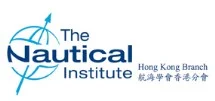May2011
archive > Log > Log2011
Hong Kong
When the
Balloon Goes Up
Almost 50 members and guests of the
Hong Kong Branch gathered in February to hear Joint Noble FNI FIIMS give a presentation entitled `What To Do When The Balloon Goes Up...and what
preparation is useful'.
As general manager of the International
Salvage
Union, and former chief executive of the Salvage Association, John is
well-qualified to pose the question and suggest possible answers.
He began by defining a major casualty as an incident where
the response and management will involve local and national coastal
authorities, plus the flag state, classification society, P&I Club, H&M, charterers and cargo interests,
among others.
To prove that
old salvage adage 'a major casualty is like an elephant - hard to describe, but
you'll know one when you see one', John then
displayed a range of casualty photographs demonstrating just how much can go wrong. He also showed a
diagram illustrating which organisations or individuals may descend upon the unfortunate vessel, and identified more than
40 possible attendees.
John gave a
brief overview of initial response procedures and the importance of a sound media policy before turning his attention
to international conventions and their
effect on casualty response. In particular, he dealt with the new OPRC Convention and what it requires
of ships and governments. He made the
telling point that post-incident analysis of ISM compliance will be of
interest to a number of parties and any non-compliance which were
causational may prejudice the outcome of subsequent legal action. He also
warned of the possible effect of the ISPS code, which can sometimes result in
extended response times, difficulties in clearing-in vital equipment and
obtaining passes and even harassment by local military or `homeland security'
personnel.
After covering the revised OPA-90
salvage requirements, the prerequisites for
professional salvors and requirements of
responders, he pointed
out the importance of knowing who is in charge. The SOSREP system in the
United Kingdom
Finally, John
described the new ISU/Nautical Institute Casualty Management Guidelines, which should he published in March
next year. These will play an important role in educating all parties involved in a salvage situation
about the role and responsibilities of all the other parties, and will
demonstrate the importance of pre-casualty training and authentic drills.
John Noble
concluded his talk with the depressingly accurate statement that success will be judged as much by
how well you handle the media as how well you handle the casualty.
Needless to
say, there was a lively question and answer session, which continued over the
buffet after the talk.
Captain Alan Loynd
FNI
Seaways May 2011

